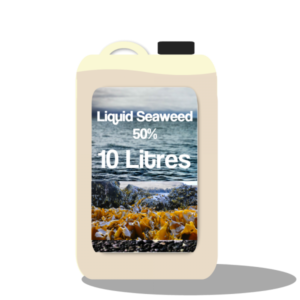Here are the recommended Greenkeeping tasks for November maintenance work for the Performance Bowling Greens Program.
Carrying out maintenance is of course dependent on the weather and underlying conditions.
Here’s what you should ideally be getting on with this month:
Mowing (8mm and at least one cut this month)
Mowing should go on through the winter months when conditions allow. It’s important to keep the height of cut at 7 or 8mm throughout the winter period and not to let the grass get too long at any point. Not only does longer grass encourage disease, by creating a slightly warmer microclimate at the green surface, it also become coarser in texture.
Disease Control and Prevention (get some Liquid Seaweed on)
 If like me you’re experiencing minus temperatures at night, you probably won’t need to worry too much about disease control.
If like me you’re experiencing minus temperatures at night, you probably won’t need to worry too much about disease control.
Greens that are still in the recovery phase probably will see occasional outbreaks of fusarium when the weather is mild and you shouldn’t be too complacent about these if your green is still thatchy, annual meadow grass dominated and/or apt to stay wet and soft at the surface.
Spot treatments of fungicide are still recommended if needed.
Seaweed Liquid with its plethora of trace elements and natural plant inoculants is an essential helper in the soil in deep winter. Trace elements like Copper and Zinc are known to help grass plants fend off attacks from fusarium and other fungal pathogens and its bio-stimulant properties helps to keep the microbe population growing and active.
Dew/worm cast removal
Worm casts left on the surface or smeared into the turf with the mower become ideal seedbeds for weeds next year, so try to make sure you clear them using a switch or brush frequently when conditions allow.
We have over 50 species of earthworm and only 3 surface feeding species’ produce surface casts. They feed surface detritus, taking it back underground, helping to recycle it into soil. If you leave debris on the surface you will get more casting worms, so try to keep it clean.
Worm killers are mostly unavailable now thankfully, as they did more harm than good, so it comes down to suppressing worm activity if they are causing a nuisance. Light applications of sulphur liquid or lentils (granules) can have a good suppressant effect.
More ideas for worm control here.
Deep slit tining
This is the most important job throughout the winter months for any bowling green. By deep, I mean 125 to 200mm, with tines that can get in to the upper limit of this range being preferred.
If you’re starting this kind of maintenance for the first time, the tines might not penetrate to this depth due to hard, compacted layers in the soil, but persevere with twice a month slit tining and you will notice a gradual and incremental improvement in the depth achieved.
Compost Tea
If the weather is mild and the green is able to take a pass of the sprayer it’s a good time to brew up and get some soil rejuvenating compost tea on your turf.
Some very interesting research from Sweden here on how soil microbes don’t slack off in winter, so the more you can do to encourage a strong soil food web, the better.
Tank mix the compost tea with Liquid Seaweed for an additional bio-stimulant boost to keep plants
More on Compost Tea here.
What if I haven’t started on the Performance Greens Program Yet?
The opposite to a green that is being maintained using the Performance Greens Program is a green that is in the grips of the Circle of Decline…and there is no time like the present to get started breaking into that. Ideally you’d start with a full assessment of your green with soil analysis etc, but you can usefully just get started with a sound winter greenkeeping program. By doing this, you will get a flying start to next season as you will already have done a lot of good work.
Recommended Program
If you’re looking for a quick and easy way to get started on the Performance Greens Program this winter, I’ve laid one out for you below. This program will help any green to become more disease resistant and will start to develop the well oxygenated, microbe rich rootzone that is essential to encouraging a sward of fine, perennial grasses.
| Operation/Month | October | November | December | January | February | March |
| Deep Slit Tining | √ X2 | √ X2 | √ X2 | √ X2 | √ X2 | √ X2 |
| Fizzy Bio Tabs | √ | √ | √ | √ | √ | √ |
| Defender | √ | √ | √ | √ | √ | √ |
| Phosphite | √ | √ | √ | |||
| 5.0.28 Mycogro | √ | √ |
Soil Analysis
If you’d like me to write a greenkeeping plan tailored to your green, you can set the ball rolling on that by ordering a soil analysis for your club. There’s no better time to do this than right now. I will send you a sampling kit and instructions for collecting samples. Everything is included for you to send your samples off to the lab freepost so it couldn’t be easier.
While the samples are at the lab I will instruct you on how to gather further evidence from your green and you can send me as much detail as you want.
Once I have your results, I will write up a comprehensive report and a tailored greenkeeping program specifically for your situation. Support afterwards is unlimited and you can contact me as often as you like for help and advice.
You can order your soil analysis below:


Hi. Can you recommend treatment for dry patch over winter please quite bad last year Thanks
Hi Robert
I recommend following the plan in this article.
You can find the materials here and here
Regards
John
Hi.
Our green is being constantly dug up by the birds pecking in various places. Prevention is an ongoing problem and one we have been loosing.
It was particularly bad this season.
Some older members have commented that they have never seen damage as severe as this before.
We were wondering if you know of any insects or issues that may be more prevalent this year to have caused such activity
Thank you
Hi Sue
It sounds like Leatherjackets (Cranefly Larvae), which have been a very big problem this year for many clubs. More advice on dealing with this here.
Regards
John
Hi John. A few questions about using slit tine aeration during the fall and winter months. I am with a club on the west coast of Canada otherwise known as the wet coast during the winter months because of the long periods of rainy mild weather. Slit tine aerators to penetrate to the depth you recommend are not readily available in my area. Would solid tine aeration to 5-6 inches followed by slit tine overseeding be a reasonable substitute action? Shouldn’t we be worried about the machinery compacting the soil if we do the recommended monthly mowing and bi-monthly aération during the wet winter months?
Hi Kenneth
Your suggested alternative sounds fine, but you’ll have to judge the conditions through winter. I don’t recommend going on the green with machinery in wet conditions.
John